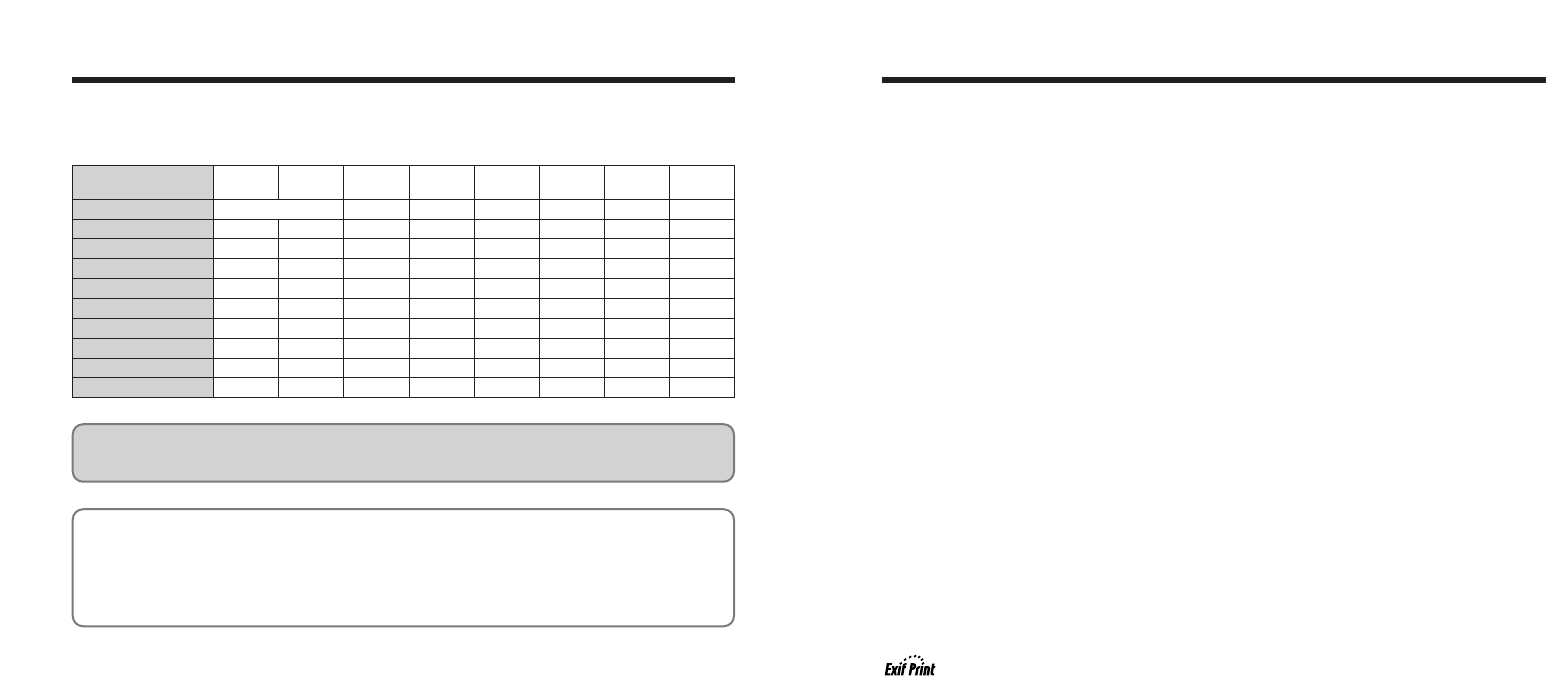
111110
Explanation of Terms
EV
A number denotes Exposure Value. The EV is determined by the brightness of the subject and sensitivity (speed)
of the film or CCD. The number is larger for bright subjects and smaller for dark subjects. As the brightness of the
subject changes, a digital camera maintains the amount of light hitting the CCD at a constant level by adjusting the
aperture and shutter speed.
When the amount of light striking the CCD doubles, the EV increases by 1. Likewise, when the light is halved, the
EV decreases by 1.
Frame rate (fps)
The frame rate refers to the number of images (frames) that are photographed or played back per second. For
example, when 10 frames are continuously photographed in a 1-second interval, the frame rate is expressed as 10
fps.
For reference, TV images are displayed at 30 fps (NTSC).
JPEG
Joint Photographic Experts Group
A file format used for compressing and saving color images. The higher the compression rate, the greater the loss
of quality in the decompressed (restored) image.
Motion JPEG
A type of AVI (Audio Video Interleave) file format that handles images and sound as a single file. Images in the file
are recorded in JPEG format. Motion JPEG can be played back by QuickTime 3.0 or later.
Smear
A phenomenon specific to CCDs whereby white streaks appear on the image when there is a very strong light
source, such as the sun or reflected sunlight, in the photography screen.
WAVE
A standard format used on Windows systems for saving audio data. WAVE files have the “.WAV” file extension and
the data can be saved in either compressed or uncompressed format. Uncompressed recording is used on this
camera.
WAVE files can be played back on a personal computer using the following software:
Windows: MediaPlayer
Macintosh: QuickTime Player
✽ QuickTime 3.0 or later
White Balance
Whatever the kind of the light, the human eye adapts to it so that a white object still looks white. On the other hand,
devices such as digital cameras see a white subject as white by first adjusting the color balance to suit the color of
the ambient light around the subject. This adjustment is called matching the white balance.
Exif Print Format is a newly revised digital camera file format that contains a variety of shooting information for
optimal printing.
Specifications
✽ These specifications are subject to change without notice. FUJIFILM shall not be held liable for damages resulting
from errors in this Owner’s Manual.
✽ The LCD monitor on your digital camera is manufactured using advanced high-precision technology. Even so, small
bright points and anomalous colors (particularly around text) may appear on the monitor. These are normal display
characteristics and do not indicate a fault with the monitor. This phenomenon will not appear on the recorded image.
✽ The operation error may be caused in a digital camera by the strong radio interference (i. e. electric fields, static
electricity, line noise, etc.).
✽ Due to the nature of the lens, the edges of images may appear distorted. This is normal.
■ Standard number of available frames/recording time per xD-Picture Card / internal memory
The number of available
frames
, recording time or file size varies slightly depending on the subjects photographed. Note also
that the divergence between standard number of
frames
and the actual number of
frames
is greater for
xD-Picture Cards with higher capacities.
Quality setting
DPC-16 (16 MB)
DPC-32 (32 MB)
DPC-64 (64 MB)
DPC-128 (128 MB)
DPC-256/M256 (256 MB)
Image data size
Number of recorded pixels
5
F
2816
×
2112
2816
×
1880 2048
×
1536 1600
×
1200
640
×
480 640
×
480 320
×
240
5
N
„2`
%
(30 fps)
$
(30 fps)
5
10
21
43
87
2.9 MB
DPC-512/M512 (512 MB)
174
10
21
43
86
173
1.4 MB
347
12
24
48
97
195
1.3 MB
389
3
20
40
81
163
326
780 KB
652
25
51
102
204
410
630 KB
819
124
249
499
999
1999
130 KB
3995
17 sec.
34 sec.
70 sec.
140 sec.
280 sec.
–
9.3 min.
27 sec.
55 sec.
110 sec.
221 sec.
7.4 min.
–
Internal memory (approx. 16 MB)
510122025124
17 sec. 27 sec.
14.7 min.
DPC-M1GB (1 GB)
349 695 780 1305 1640 7996
18.7 min. 29.6 min.
If you shoot using the DPC-M256/M512/M1GB xD-Picture Card, movie recording time may be reduced
if you repeatedly record and erase (frame erase) image files. In such a case, erase all frames or format
the picture card before use. Back up important frames (files) onto your PC or another media.


















